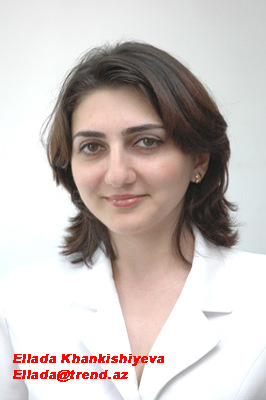Inflation decreased steadily in May and June after stable growth for seven months period. If monthly growth of prices (in annual segment) was 13,7% during January-April, then it was 13,2% in May-June. If basic inflation (freed from seasonal fluctuation) was 8,7% in April, then it was 8,5% in May and 8.4%- in July.
Foodstuff played positive role at decrease of rates of inflation in June. Thus, rates of growth of food prices in June, comparing with May, decreased by 0,5 present points and were 16,2%. Rates of growth of prices on non-foodstuff and services were in the level of May rates and comprised correspondingly 2 and 16,2%.
Majority of government economists and official authorities predict further decrease of inflation till end of the year. They think, it will be reflected in one-figure digit. Slackening of rates of inflation for the second month serves, as a serious motive for analysis of causes of its decrease.
What caused weakening of inflation rates It is necessary to indicate, that as monetary, so non-monetary factors caused increase of inflation in anti-inflation decree, signed by the president of Azerbaijan Ilham Aliyev in the beginning of June. Increase of price of imported goods, increase of volume of circulating money supply and non-sufficient development of mechanisms of attraction of abundant money supply by means of different financial tools, imperfection of structure of investment directed to economy were indicated among the first reasons in the decree.
Insufficiency of struggle against monopoly in production, trade and import-export operation etc. were called as non-monetary factors. Which of these factors was more active?
By data of National bank the role of monetary factors in formation of inflation during the first half year was 30%. At that, activity of these factors was of diversified orientation. Therefore, increase of money supply acted in direction of acceleration of growth of prices. However, dynamics of inflation does not coincide fully with dynamics of growth of prices.
Annual rates of groГјth of money supply (Рњ2) decreased significantly, and rates of inflation vice-versa increased.
Rates of annual growth of money supply sharply increased in May, and rates of inflation decreased. Similar different direction was observed in dynamics of money supply in basic inflation just as well.
This non-coincidence may be explained by opposite action of other monetary factor вЂ" rate of manat in ratio to dollar. Stable strengthening of rate of manat in relation to dollar leads to decrease of prices on imported goods, this eventually is reflected in total level of prices in the state.
As always, non-monetary factors were defining the main part of dynamics of prices. By data of National Bank 70% of growth of prices during January-June was on share of these factors. All other non-monetary factors acted in direction of growth of prices, excluding growth of supply of goods at consumer market and seasonal factors, acting towards growth of prices. Especially, it is necessary to indicate increase of prices on public services and increase of inflation expectations of society.
Analysis of dynamics of inflation in May and June allows concluding that non-monetary factors influence on increase of rates of growth of prices. Due to this reason National bank actively applies monetary levers for compensation of part of growth of prices. Particularly, strengthening of manat rate, decreasing of inflation may not be at the same time considered, as normal tendency from view point of competitiveness of national production. Thus, it would be rational till autumn (increase of inflation in Azerbaijan is traditionally observed at this period) to decrease accelerated influence of non-monetary factors. This might create good reserves for prevention of non-normal increase of inflation at autumn-winter period, when, namely, monetary factors are usually activated.






